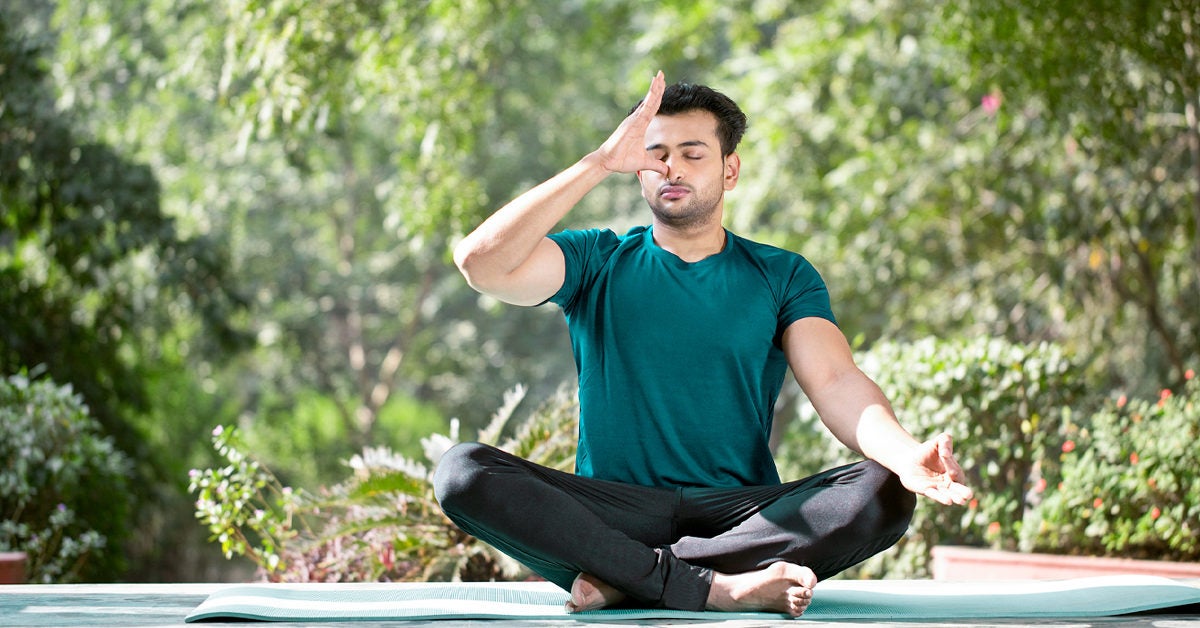Breathing exercises: While India continues to gasp for breath due to an extreme shortage of oxygen supply, it has become important to be vigilant by staying at home and keeping healthy and fit. We need to strengthen our lungs more than ever, as the COVID-19 virus impacts our respiratory system severely.
Breathing exercises are a great way to develop the lungs as they improve lung muscles, clear out any secretion and increase the capacity by supplying an adequate amount of oxygen. There are several other benefits to these exercises as well! It also helps us stay calmer, and de-stress especially in these unprecedented times we are living in.
To get started, here are five breathing exercises you can do at any time of the day and in any comfortable space.
Deep breathing with increasing counts: breath-in and breath-out
This is one of the easiest and most important exercises. It helps in strengthening our lungs and improving blood flow, immunity and eliminating stress and anxiety.
Steps:
- Sit down in a relaxed position, take a deep breath and count your inhalation and exhalation. Ideally, your inhalation and exhalation counts should be the same.
- With each breath increase the count to inhale and exhale for as long as comfortable. Practise from 2 to 5 minutes duration.
2. Ujjayi Pranayama or Ocean breath
/25-3566763-OceanBreath-004-4ce7689b1e954c51853ce3750492daaa.jpg)
The word Ujjayi Pranayama is derived from the Sanskrit word “Ujjayi,” which means to conquer. Practising this kind of breathing may improve concentration, release tension throughout the body, regulate the internal temperature of the body and promote lungs function. In this breathing technique, you have to take a deep breath from both the nostrils and half-closed glottis.
How to do it:
Step 1: Sit down on the ground in any meditative pose keeping your eyes closed and spine neutral.
Step 2: Take long breaths in and out through your mouth, feeling the air passing through your windpipe.
Step 3: Once you are comfortable with your exhales, contract the back of your throat to constrict the passage of air. Your throat will start making a rushing noise while breathing.
Step 4: Once you are comfortable with exhaling, constrict the throat the same way while inhaling.
Step 5: When you can contract your throat while both inhaling and exhaling, close the mouth and start breathing through the nose.
Step 6: Fill your lungs, hold your breath for a while and then exhale.
3. Anulom-vilom

More commonly known as alternate nostril breathing, it is a prevalent Pranayama and has been spoken about in the Hatha Yoga literature. This exercise helps clear out the nasal passage and improves respiratory muscle strength. It is advised that Anulom-vilom should be practiced on an empty stomach ideally in the morning or in the evening after a long meal gap.
Steps:
* Sit on a chair or on the ground cross legged, in a meditation position
* With your right thumb, close your right nostril and inhale through the left nostril. Release your right nostril and with your middle and ring finger, close your left nostril exhaling through the right nostril.
4. Bhramari

Derived from Sanskrit, brahmari literally means a bee. It is a humming exercise, which increases nitric oxide in the body and acts as vasodilators; helps with easier blood flow through the vessels and prevents muscles from tightening.
Steps:
* Sit on a chair or on the ground cross legged, in a meditation position
* Close your ears using your thumb and place your middle and ring fingers lightly at the inner corner of your eyes.
Rest your index finger above your eyebrows and little finger where it rests on your cheeks
* Take a deep breathe in and while exhaling make a soft humming sound similar to ‘hmmmmm’, throughout the entire exhalation. Inhale again and while exhaling make the humming sound
* Practise for 10 minutes for benefits to start accruing.
5. Pursed lips breathing

In pursed lips breathing, you breathe in through your nose and exhale slowly by puckering your lips. When feeling short of breath, pursed lips help to get more oxygen into your lungs and calms you down so that you can breathe in a controlled manner.
How to do it:
Step 1: Sit down in a comfortable position with your back straight and your hand placed on your knees.
Step 2: Inhale through your nose for a few seconds and try to fill your abdomen with the air, instead of your lungs.
Step 3: Purse your lips and breathe out slowly for 4 to 6 seconds.
Step 4: Repeat the same 5-10 times.












